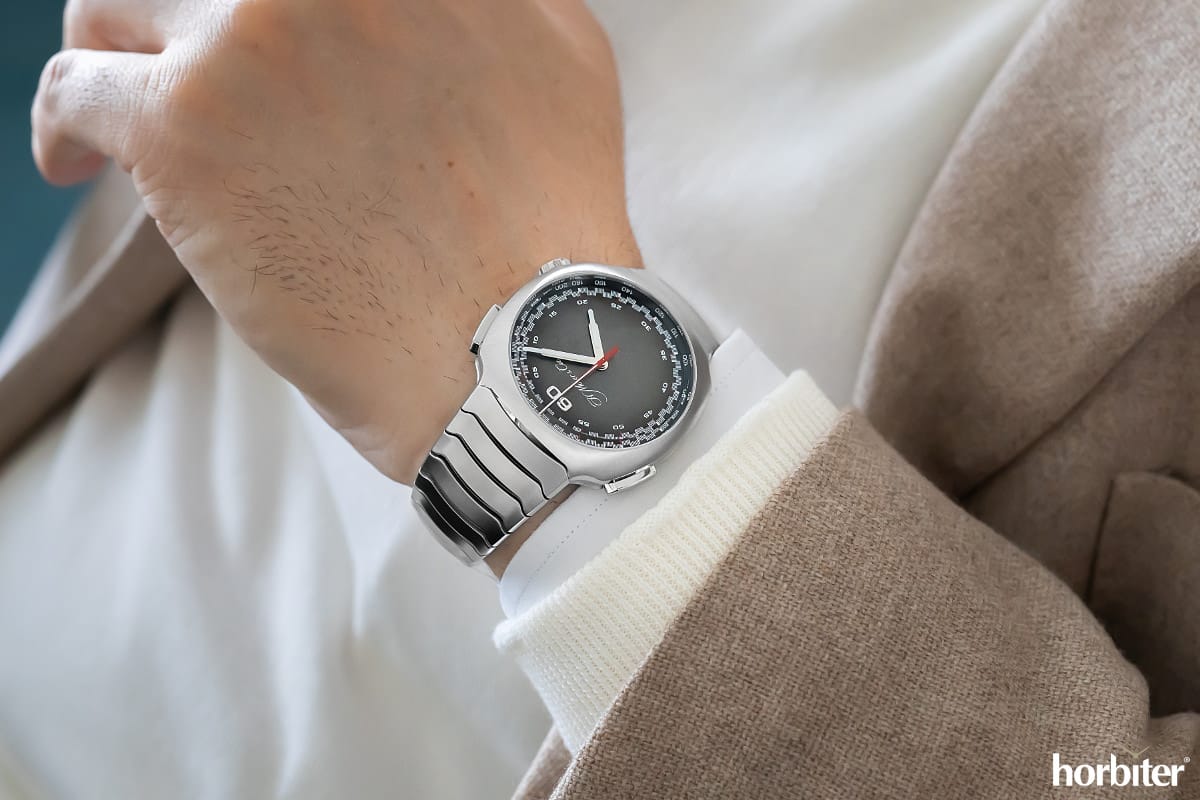Always expect the extraordinary when H.Moser & Cie. introduces a new watch.
According to a recently uncovered story, the Meylans have long aspired to create a luxury sports watch, thus entering the arena where Patek and Audemars Piguet rule, and expand the base of potential customers.
How did they combine the brand’s wow effect with an eye-catching design and technical prowess? Let’s find out.
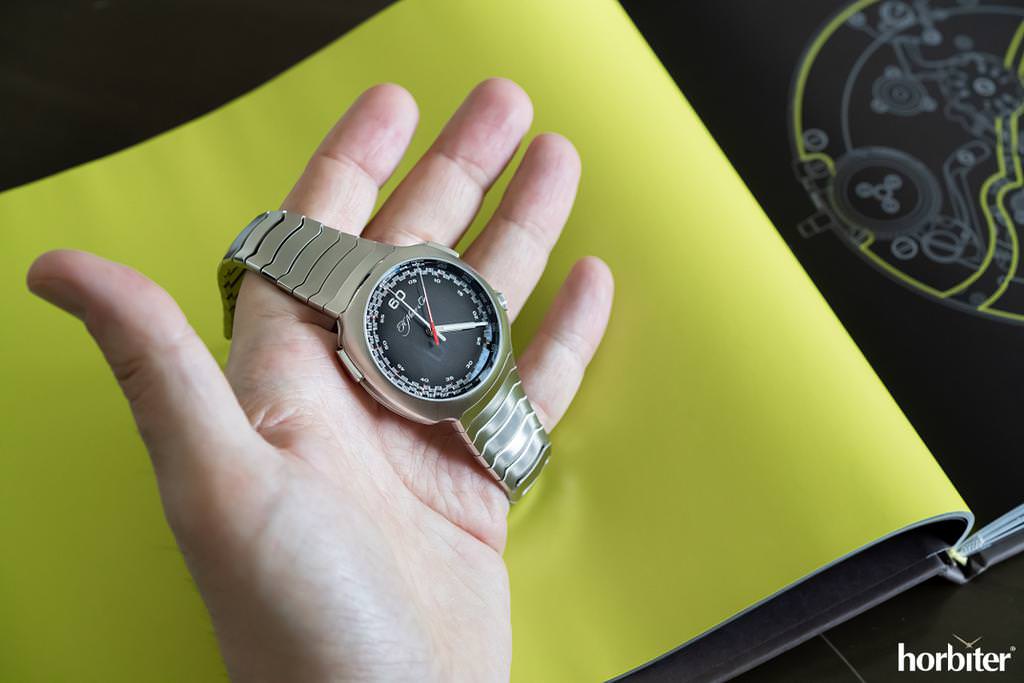 The H.Moser & Cie. Streamliner Flyback Chronograph pictured in this hands-on review is part of the last photo-shooting we were lucky to complete before the emergency due to the Covid–19 has locked down Milan, Northern Italy, first, and the entire country, then.
The H.Moser & Cie. Streamliner Flyback Chronograph pictured in this hands-on review is part of the last photo-shooting we were lucky to complete before the emergency due to the Covid–19 has locked down Milan, Northern Italy, first, and the entire country, then.
We are proud to have been the first Italian digital magazine to offer such coverage, considering how the Streamliner is a breakthrough equally crucial for the brand and the market segment it belongs.
This timepiece deserves great respect, and a “touch and feel” session to be fully appreciated; the press media photos available are not enough in my opinion to get an idea of what you can perceive by wrapping it around your wrist. H.Moser & Cie. reaffirms itself as a “think tank” in Haute Horlogerie, and the new watch is another example of how creative is the brand.
Also, a full steel timepiece is a means to breaking those rules that are hard to override, when designing a classic watch on a leather strap, instead.
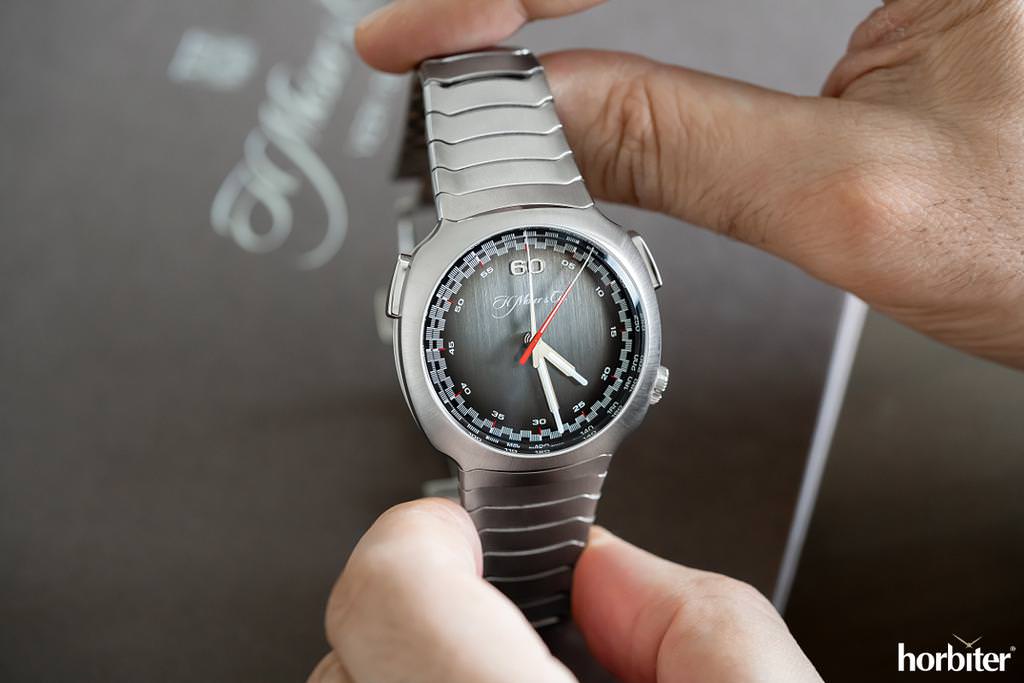 As stated above, the H.Moser & Cie. Streamliner Flyback Chronograph is H.Moser & Cie.’s first journey into uncharted territory, and the Meylan family’s chance to live out a dream since they initially acquired the brand. The story goes that it took five years of development from concept to final product.
As stated above, the H.Moser & Cie. Streamliner Flyback Chronograph is H.Moser & Cie.’s first journey into uncharted territory, and the Meylan family’s chance to live out a dream since they initially acquired the brand. The story goes that it took five years of development from concept to final product.
In Edouard Meylan‘s words, the Streamliner project was part of the brand’s roadmap since 2012, when the family took over this high-end brand close to bankruptcy, back then.
The Meylans began investing millions in restoring the watchmaker and bringing it to profitability, thus proving how successful can a small independent watch manufacturer be in a scenario ruled by big luxury groups and their huge cash flows.
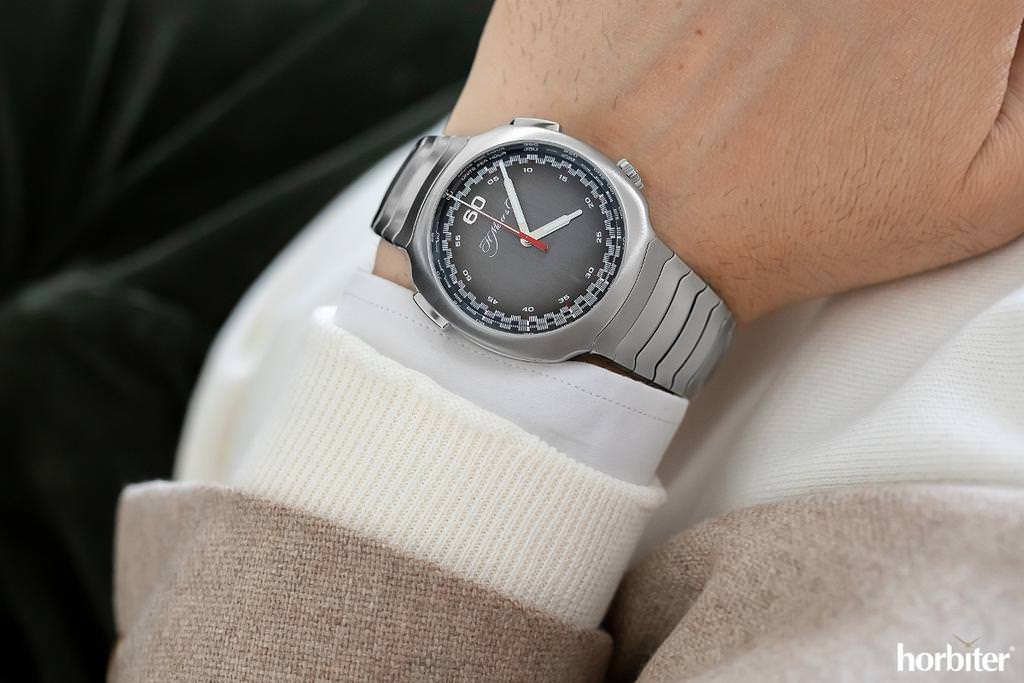 The source of inspiration, and the naming too, in the making of this chronograph, comes from the American Streamliner trains’ aerodynamic silhouettes.
The source of inspiration, and the naming too, in the making of this chronograph, comes from the American Streamliner trains’ aerodynamic silhouettes.
Let please confine aerodynamics to fast-moving objects like cars, motorcycles, planes, high-speed trains, or whatsoever; nothing has to do with a timepiece’s case style, apart from inspiring designers.
From a product perspective, H.Moser & Cie. pioneers innovation, and the Streamliner can be compared, among Indie watchmakers, to what Bulgari did when it took the risk and changed the game with the Octo Finissimo.
They’re playing different games, but share a common approach, that is making a difference in their respective areas.
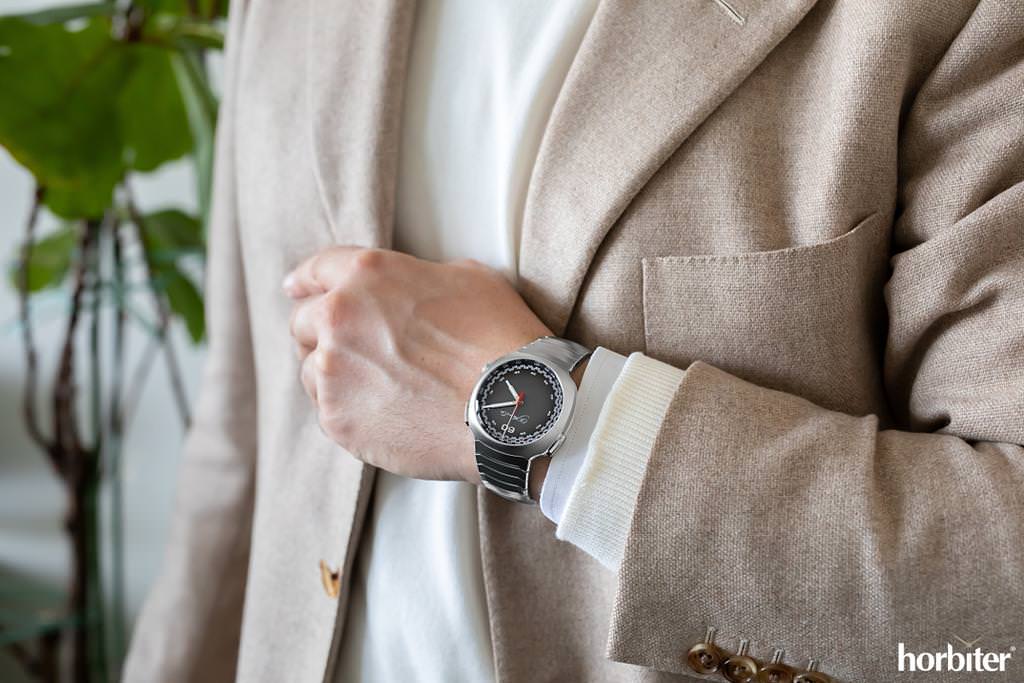 The H.Moser & Cie. Streamliner Flyback Chronograph showcases a cushion-shaped case, whose curves keep my mind off to the seventies and eighties, with the steel bracelet reminding me nature instead.
The H.Moser & Cie. Streamliner Flyback Chronograph showcases a cushion-shaped case, whose curves keep my mind off to the seventies and eighties, with the steel bracelet reminding me nature instead.
The former has a vintage Heuer feel to it combined with some bubble-shaped Sinn cases’ details. In contrast, the latter has old-fashioned design cues from some Ebel watches, notably in how the bracelet looks and integrates with the case.
The 42,3mm case, across, is the result of a carefully thought out design process, and meticulous attention to the tiniest details, there’s no question about it.
I think the development team built countless mock-ups before final sign-off, to highlight the perception of holding something unique, never seen before.
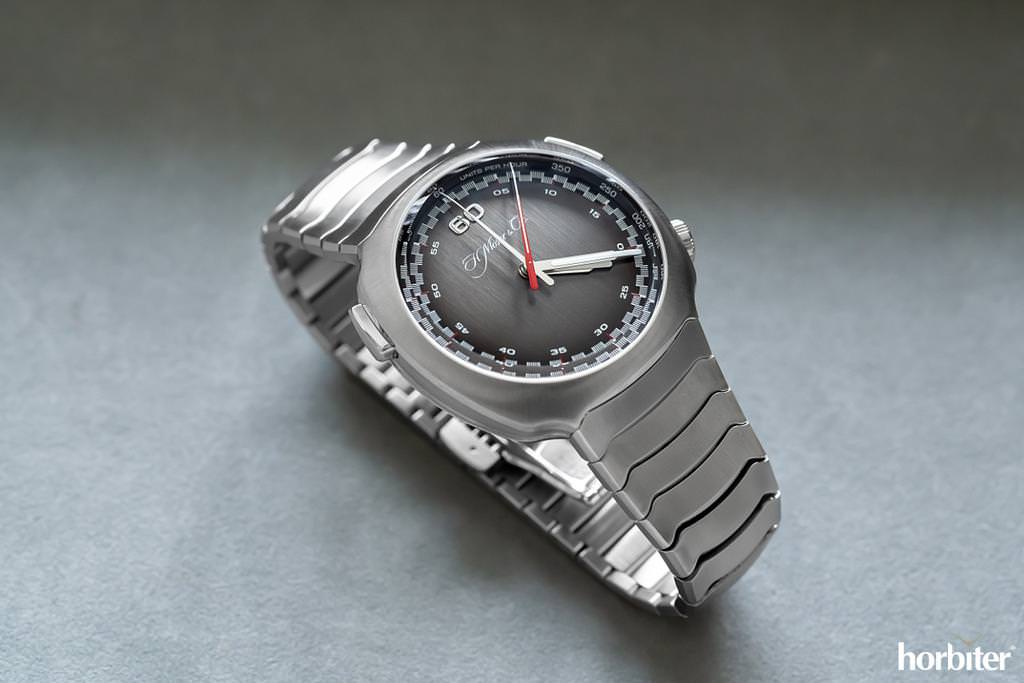 From atop, case and bracelet are satin-finished, with a glass-box sapphire to making it bolder both on and off the wrist, whereas the case-side houses long Chrono pushers located at ten and two o’clock.
From atop, case and bracelet are satin-finished, with a glass-box sapphire to making it bolder both on and off the wrist, whereas the case-side houses long Chrono pushers located at ten and two o’clock.
The same we can argue of the integrated bracelet, where polished areas arise from beneath the satin links as you’re twisting your wrist.
It proves how has this solid bracelet been conceived and subsequently executed since the engineering is truly first-rate.
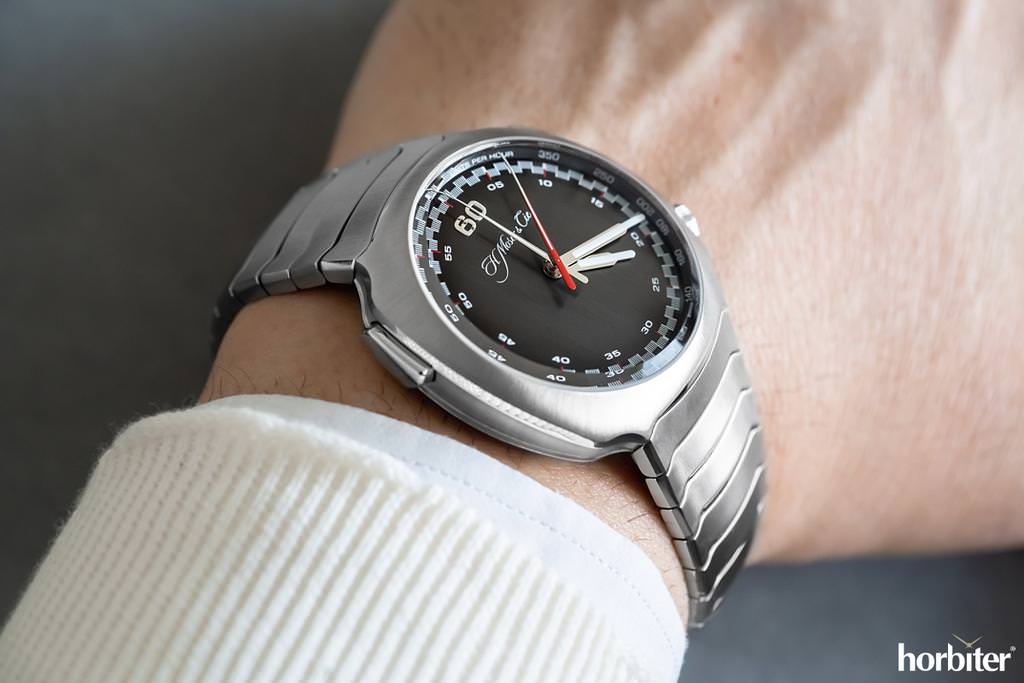 A three-quarter view reveals additional details: thin polished edges run along the case-side and surround hollowed satin-finished surfaces. Gaps between the parts are so tight that the whole package is flawless, and the Chrono pushers offer a rewarding experience once pushed.
A three-quarter view reveals additional details: thin polished edges run along the case-side and surround hollowed satin-finished surfaces. Gaps between the parts are so tight that the whole package is flawless, and the Chrono pushers offer a rewarding experience once pushed.
The dial is quintessentially H.Moser & Cie, and its smoked (and “griffè” or vertically brushed) finish is covered by a big, bold, and polished “60” index applied at twelve.
Renowned for crafting the most legible timepieces among the complicated ones, in the industry, H.Moser & Cie applied the same formula to the Streamliner, namely a chronograph featuring a double flyback function, in a three-hands’ timepiece’s disguise.
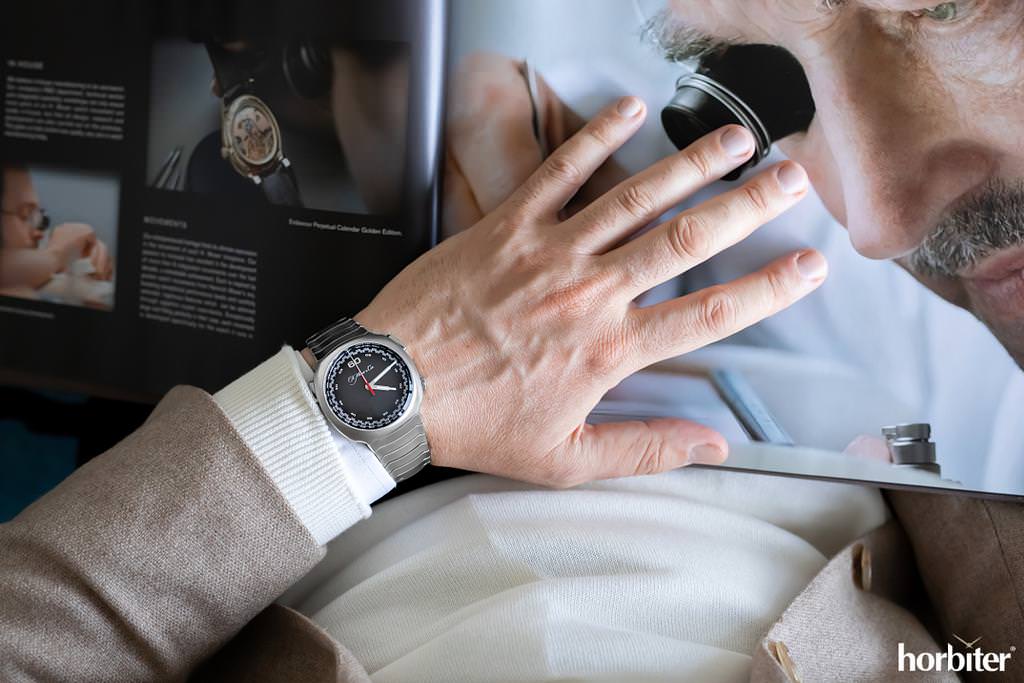 In-depth, the H.Moser & Cie Streamliner Flyback Chronograph offers a double Flyback function, for minutes and seconds, thanks to two superimposed central hands that mimic a Rattrappante or Double Chronograph mechanical complication, at first sight.
In-depth, the H.Moser & Cie Streamliner Flyback Chronograph offers a double Flyback function, for minutes and seconds, thanks to two superimposed central hands that mimic a Rattrappante or Double Chronograph mechanical complication, at first sight.
To be more specific, the H.Moser & Cie Streamliner Flyback Chronograph is the only automatic chronograph in the world to offer a double Flyback function, for both minutes and seconds.
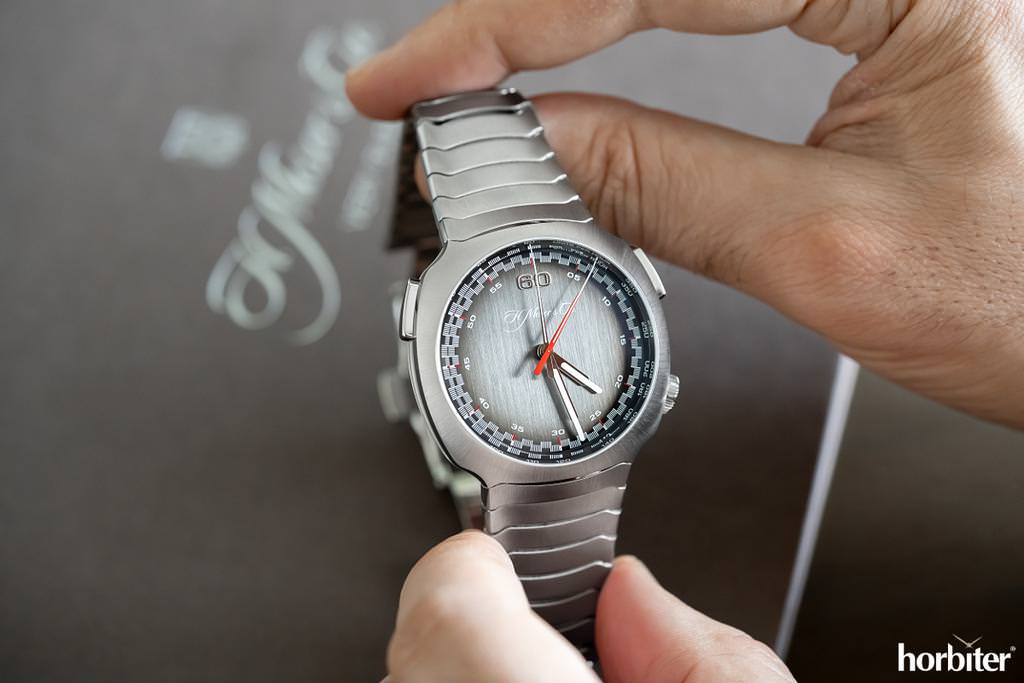 In powering the Streamliner, H.Moser & Cie. has partnered with Agenhor, the acronym for Atelier GENevois d‘HORlogerie. It is a high-end engineering firm, world-renowned for designing some of the most creative mechanical movements, offering advanced technologies and uncommon time display.
In powering the Streamliner, H.Moser & Cie. has partnered with Agenhor, the acronym for Atelier GENevois d‘HORlogerie. It is a high-end engineering firm, world-renowned for designing some of the most creative mechanical movements, offering advanced technologies and uncommon time display.
To cut a long story short, Agenhor supplies Hermès and Van Cleef and Arpels (it makes the brands’ poetic complications, for example), has proven expertise in producing retrograde complications and unique chronograph mechanisms.
The HMC 902 is a custom-engineered variant of the company’s patented and industry-leading caliber AgenGraphe, whose other applications include the Singer Reimagined Track 1 and Fabergè.
The 902 is an automatic movement, whose tungsten-made winding mass is placed on the dial side to let the wearer enjoy the movement’s architecture.
It consists of 434 parts, which are a lot considering a refined sibling, housed inside a Blancpain Villeret Flyback Chronograph, for instance, stops at a whopping 322.
Why (and where) is the Moser HMC 902 caliber different?
To better understand what makes this chronograph outperform the competition, let’s start by explaining what makes an AgenGraphe stand out.
Consider your goals being the following: to centralize all the chronograph functions display, to improve a column wheel and matching horizontal clutch device’s performance, and, finally, to engineer an instantaneous jumping mechanism for centrally displaced hours and minutes counters.
Such a layout offers better usability and superior readability since all the timepiece’s functions are arranged centrally on the dial.
These features made Agenhor the most suitable partner for H. Moser & Cie. In an AgenGraphe, gear trains, escapements, bridges, and main functional parts are all arranged on a somewhat outer ring, whereas a hole in the middle houses the chronograph activation mechanism.
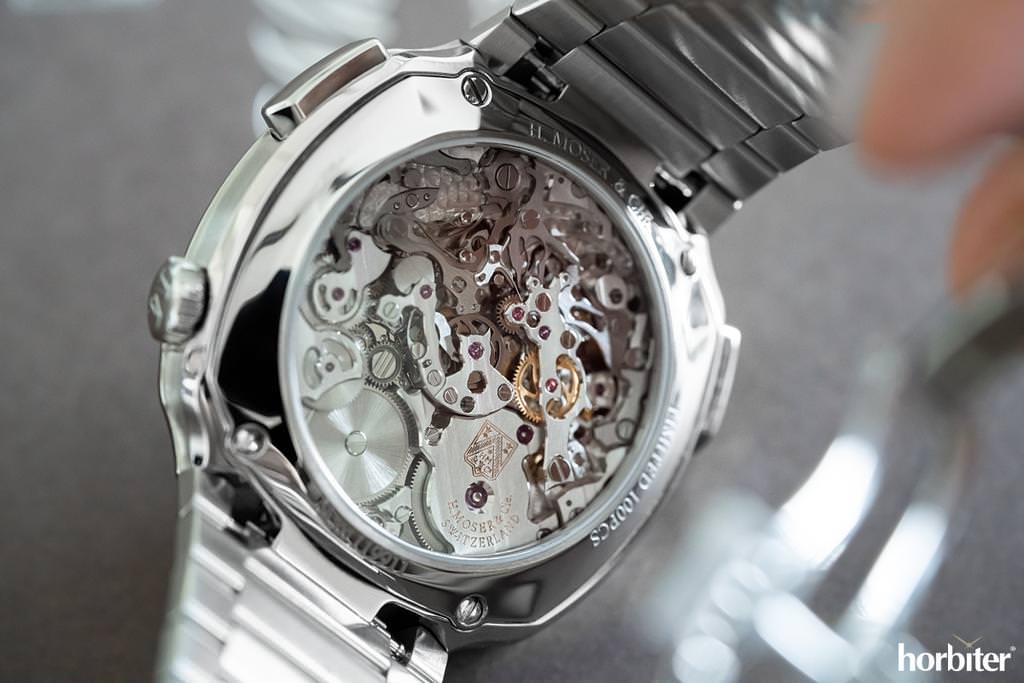 A snail-shaped cam and spring system allows the energy released by the running Chrono seconds to be stored and then released as soon as sixty seconds have been elapsed, with the minute hand instantaneously jumping to the next elapsed minute and increase therefore the totalizer.
A snail-shaped cam and spring system allows the energy released by the running Chrono seconds to be stored and then released as soon as sixty seconds have been elapsed, with the minute hand instantaneously jumping to the next elapsed minute and increase therefore the totalizer.
The same goes for the hours’ totalizer and minutes one. In ordinary V-shaped chronographs, the minute counters offer semi-continuous totalizers.
Also, the main difference between the HMC 902 and its siblings adopted by Singer Reimagined and Fabergè, for example, is that there are no Chrono hours totalizers on the H.Moser & Cie.
This system also drives the zero-reset function. Last but not least, the chronograph comes equipped with AgenClutch, a patented solution consisting of increased friction between the engaging disks and the addition of cogwheels on both, to make sure there is no slip between the disks themselves during the engagement of the clutch.
Raising expectations: how does a Streamliner Chronograph feel, once on the wrist?
More than ever before, comfort is an essential requirement in deploying the project features of any new full-steel sports watch; it is not less relevant, in my judgment, than the complication itself that timepiece offers.
The HMC 902 is so refined it requires an accurate explanation of how it works to current or potential buyers along with above-the-average knowledge of a watch’s mechanism.
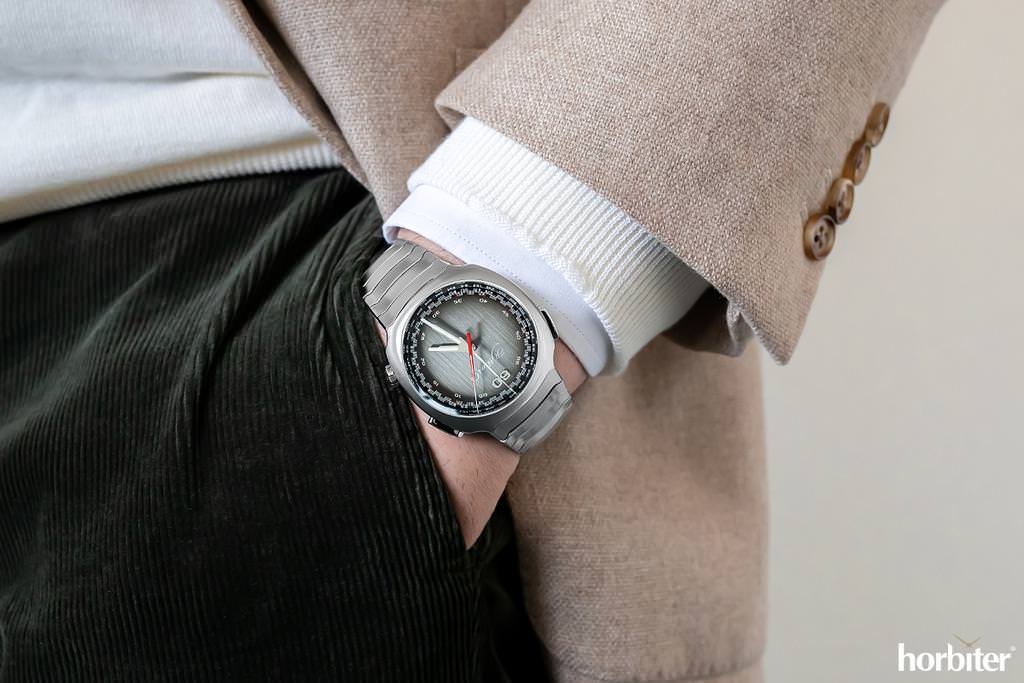 Once wrapped around your wrist, it looks like operating a pimped up chronograph via a three-hands looking timepiece, which is genius.
Once wrapped around your wrist, it looks like operating a pimped up chronograph via a three-hands looking timepiece, which is genius.
The flowing single-link integrated bracelet draws inspiration by nature and, it might look bizarre, reminds me of an armadillo’s armor-like skin. It offers excellent build quality; it is bold and pleasing. Still, I have identified two areas of improvement.
The former is the double push-button release that protrudes too much; the latter is the inner part of the folding buckle that looks cheap and ordinary for a brand whose mission is top-notch attention to detail.
The case is 42,3mm across and 14,2mm thick: we’re not dealing with a thin chronograph; nonetheless, the cushion shape paired with a pinch-free bracelet makes it enjoyable to wear.
Final thoughts.
H.Moser & Cie. hit the nail on the head with the Streamliner: it is not just a new take, rather a new approach to a luxury sports watch. The small independent brand dared where most luxury groups, whose industrial capability and budget are much bigger, didn’t.
The H.Moser & Cie. Streamliner Flyback Chronograph‘s caliber HMC 902 caliber is a strength and a weakness in equal measure, and I’ll explain my reasoning straight away; it is technically unrivaled, but not conceived in-house as any other H.Moser & Cie. caliber.
An expert’s eye and an H.Moser & Cie. lover might quickly point out it is based on the AgenGraphe. That’s nothing wrong with it, just a small flaw from a brand identity’s standpoint.
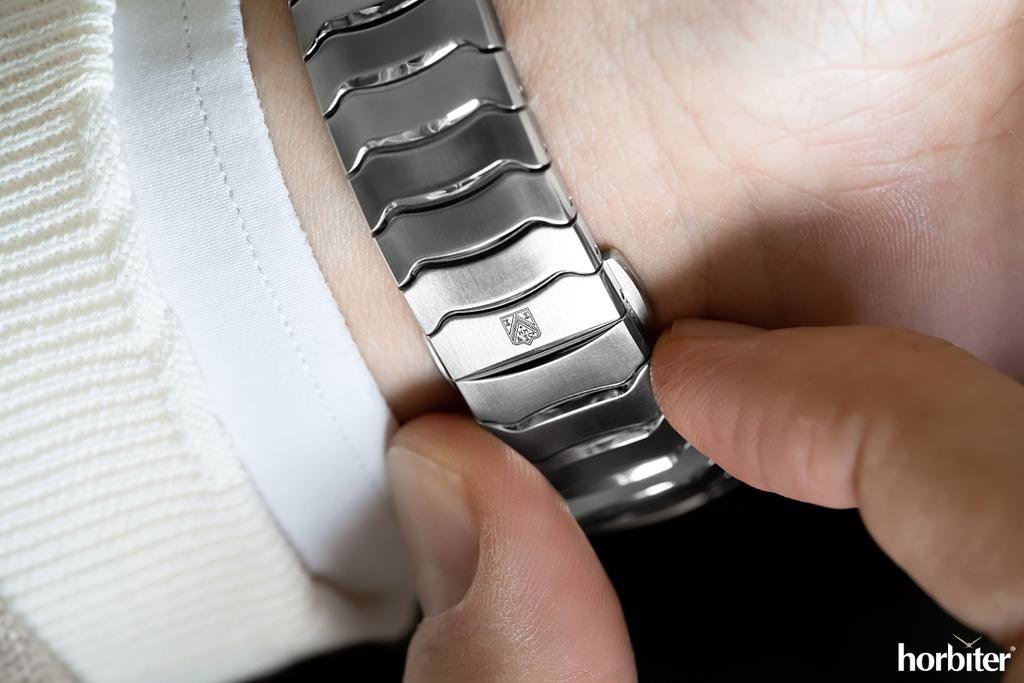 Vice versa, designing and producing in-house an equally outstanding caliber might have exposed the brand to substantial financial risk, with no return on the investment or loss, given the retail price (€ 38,000), and total volumes (100 pieces).
Vice versa, designing and producing in-house an equally outstanding caliber might have exposed the brand to substantial financial risk, with no return on the investment or loss, given the retail price (€ 38,000), and total volumes (100 pieces).
We will soon discover whether the Streamliner is a winner or a loser, what I also envision is the future scenario: is this chronograph a one-off experiment, or the forerunner of a new collection?
I do think the latter, and I believe more accessible timepieces will be gradually introduced, hopefully, a three-hands in steel featuring a manufactured caliber and slimmer case.
I am equally curious and impatient since I’m going to increase the H.Moser & Cie.. new buyers’ list, then.
(Photo credit: Horbiter®)
Gaetano C @Horbiter®
